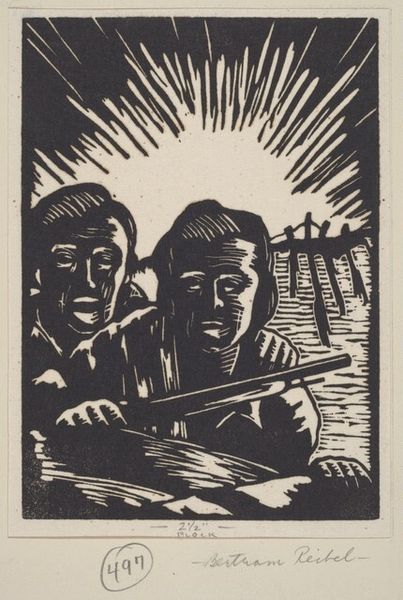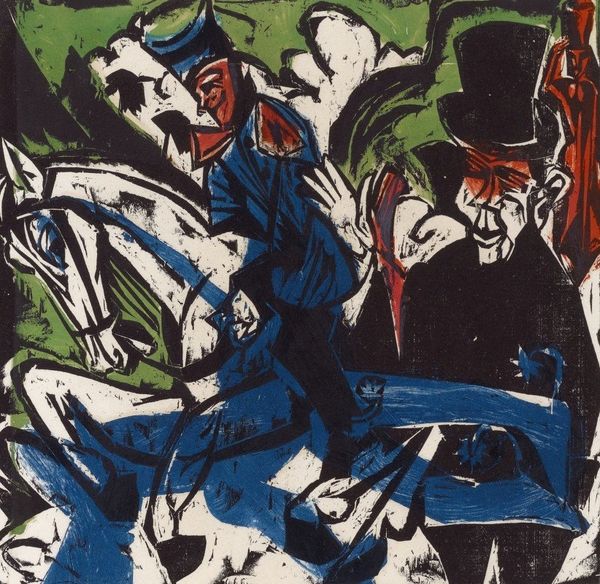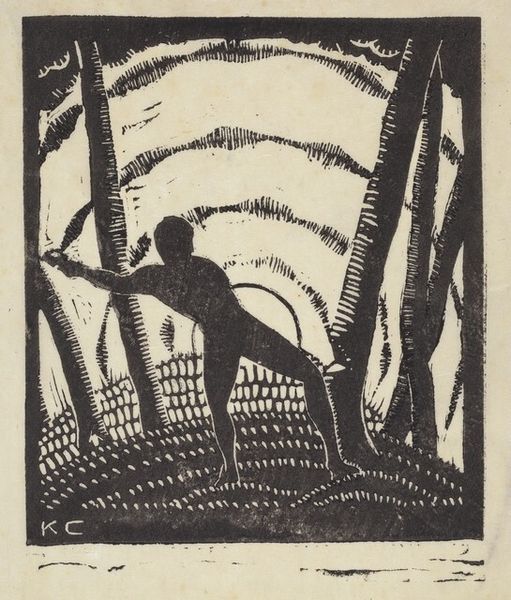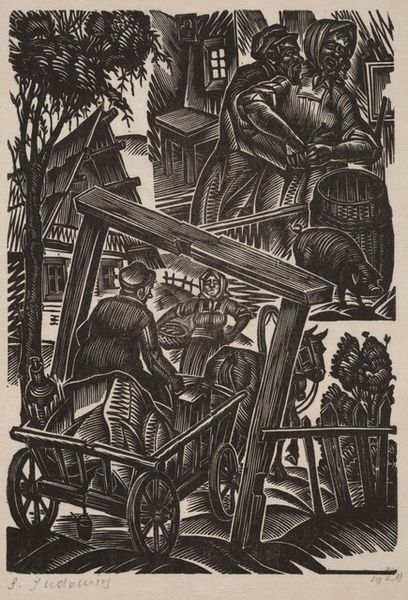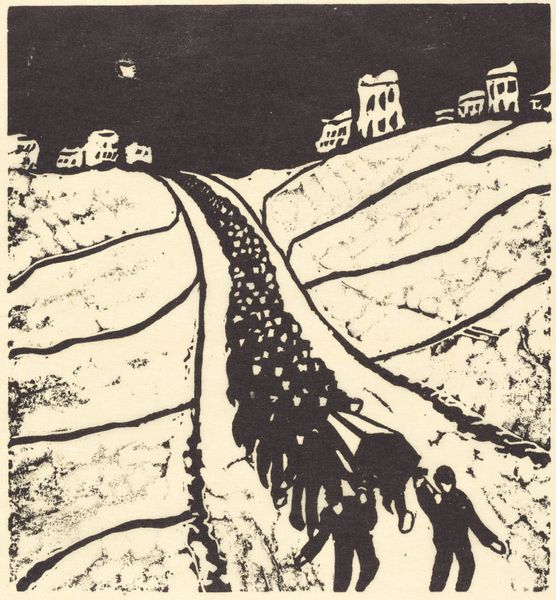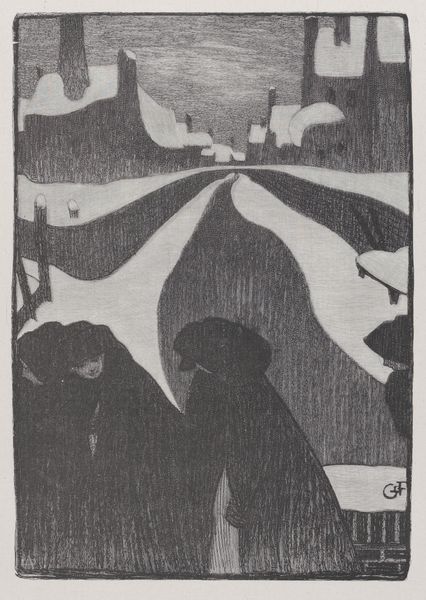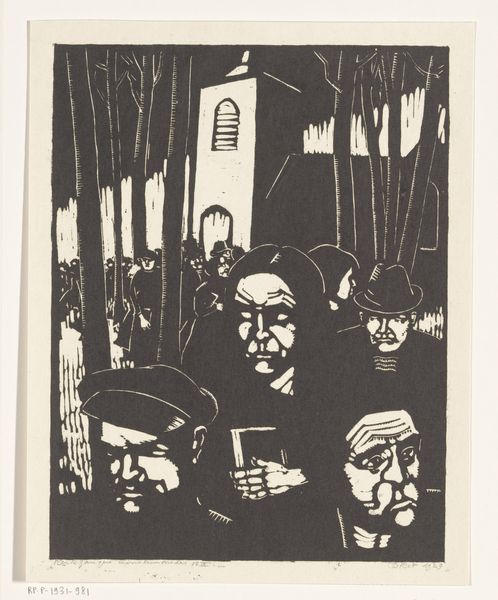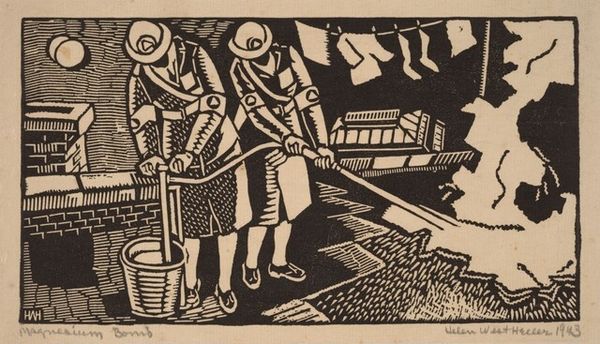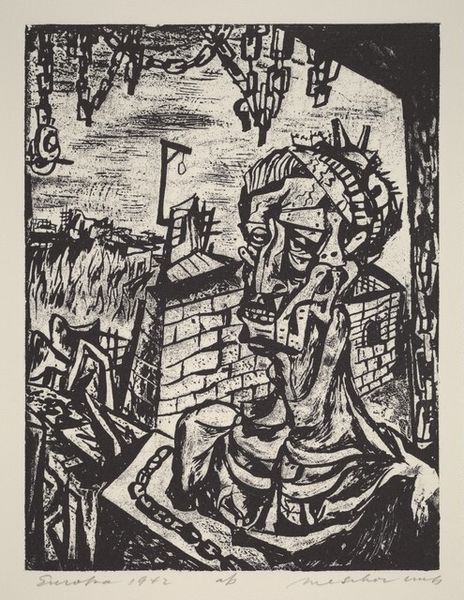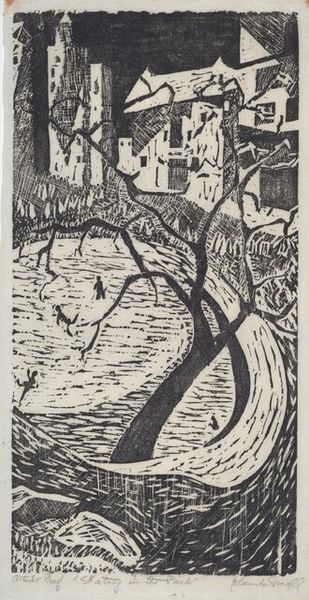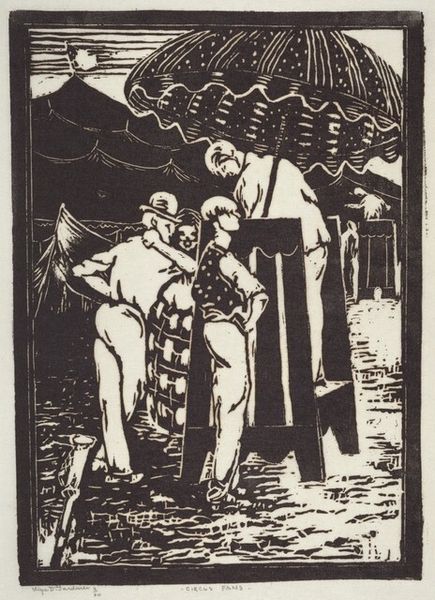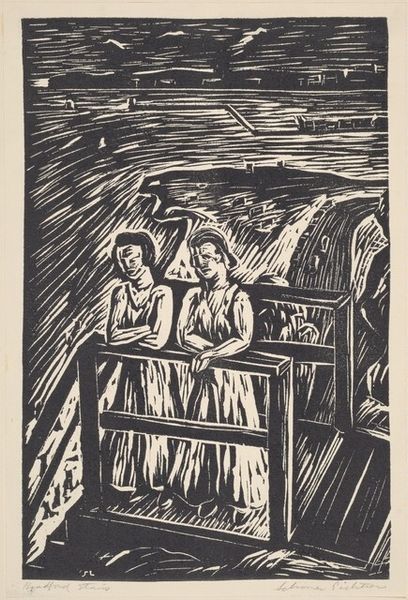
print, woodcut
# print
#
landscape
#
figuration
#
woodcut
#
abstraction
#
northern-renaissance
Dimensions: Image: 230 x 160 mm Sheet: 356 x 260 mm
Copyright: National Gallery of Art: CC0 1.0
Editor: Here we have Ruth Leaf's "Planting," a woodcut print from 1946. I'm really struck by the blocky shapes and limited color palette. It feels both folksy and a little unsettling, like a memory. What do you see when you look at this print? Curator: I see a rigorous exploration of form and color. Note the interplay of positive and negative space, particularly in the depiction of the figures. The limited color palette – blues, browns, whites, and touches of pink – doesn’t diminish the complexity of the image; rather, it intensifies the contrast. The heavy reliance on dark outlining creates the dynamism within the landscape, wouldn’t you agree? Editor: Yes, the dark lines really define the shapes. I'm curious, though – the "Planting" title suggests a hopeful theme, but the overall mood feels a bit somber. Curator: That’s perceptive. Consider how the simplified forms almost abstract the figures, flattening them into the landscape. The way the bodies nearly camouflage with their surrounding evokes both a symbiotic dependence and suggests the figures risk obliteration from being one with the landscape they rely on for sustenance. It generates tension: dependence or constraint? This ambiguity is at the core of the work’s visual power, its dialectic. The artist makes you do the work; this piece’s dynamism hinges on our interpretative efforts. Editor: That's fascinating. I hadn't considered the relationship between the figures and the landscape in that way. I was focusing more on the flatness, but what you're saying about figure and ground… that completely changes my understanding. Curator: Indeed. Through an astute arrangement of line, form, and color, “Planting” transcends a simple depiction of rural life to become a visual dialogue about existence and form itself. It makes the viewing of art worthwhile.
Comments
No comments
Be the first to comment and join the conversation on the ultimate creative platform.
